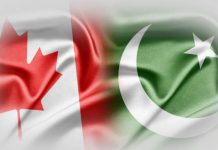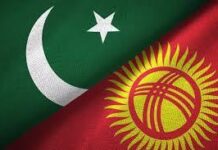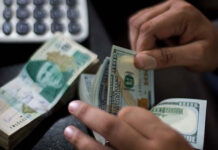Asian stocks retreated on Friday while oil prices headed for their sharpest weekly gain in more than a year, as escalating tensions in the Middle East kept markets on edge ahead of a U.S. jobs report later in the day.
U.S. President Joe Biden said on Thursday that the U.S. is discussing strikes on Iran’s oil facilities as retaliation for Tehran’s missile attack on Israel, while Israel’s military hit Beirut with new air strikes in its battle against Lebanese armed group Hezbollah.
Biden’s comments sparked a surge in oil prices, which had already been on the rise this week following the widening conflict in the Middle East.
Brent crude futures eased 0.04% to $77.59 a barrel on Friday but were headed for a weekly gain of about 7.8%, the largest since February 2023.
U.S. West Texas Intermediate (WTI) crude futures steadied at $73.71 per barrel and were on track to advance 8.1% for the week, the most since March 2023.
“I think we’re probably not far away from getting an Israeli response. The concern, obviously, is that President Biden confirmed that Iranian oil facilities were discussed as a potential target,” said Tony Sycamore, a market analyst at IG.
“If we woke up on Saturday or Sunday morning to find out that there had been a response, that wouldn’t surprise me at all. So very much cautious trading ahead of that. We know it’s coming, it’s just creating uncertainty because we don’t know what the timing is, and of course we don’t know what they’ve decided in terms of the targets.”
The Dow dropped more than four-tenths of a percent, the S&P 500 shed almost two-tenths,
The air of caution in turn left most equities in the red on Friday.
MSCI’s broadest index of Asia-Pacific shares outside Japan fell 0.32% and was set to end the week little changed.
Australian shares fell 1%, while stock futures extended their declines from the previous session.
S&P 500 futures and Nasdaq futures eased 0.03% each, while EUROSTOXX 50 futures were flat.
Japan’s also reversed early gains to last trade 0.08% lower. It was headed for a weekly loss of more than 3%.
The Nikkei has had a choppy few sessions this week as investors weighed the rising geopolitical tensions against the domestic rate outlook.
Japanese officials, including Prime Minister Shigeru Ishiba, said this week that economic conditions in the country were not ripe for more rate hikes by the Bank of Japan (BOJ), and that the central bank should be cautious in tightening policy further.
The comments sent the yen weakening past the 147 per dollar level, though it traded higher on Friday and last stood at 146.60 per dollar.
Still, the Japanese currency was headed for a weekly fall of roughly 3%, its sharpest decline since 2016.
In some good news, U.S. dock workers and port operators reached a tentative deal which will immediately end a crippling three-day strike that has shut down shipping on the U.S. East Coast and Gulf Coast, the two sides said on Thursday.
Economic Resilience
Focus was also on the key U.S. nonfarm payrolls report due later on Friday, which would provide further clues on the Federal Reserve’s rate outlook.
Expectations are for the world’s largest economy to have added 140,000 jobs last month, slightly down from August’s 142,000 increase.
Ahead of the release, the dollar held near a six-week high against a basket of currencies and was last at 101.92.
A slew of data releases this week have pointed to a U.S. economy still in solid shape, after the country’s services sector activity jumped to a 1-1/2-year high in September amid strong growth in new orders, while a separate report from the Labor Department on Thursday showed the labour market gliding at the end of the third quarter.
That sent traders paring back bets of another 50-basis-point rate cut by the Fed next month, with futures pointing to just a 35% chance of such a scenario.
“The U.S. services ISM beat strongly on the upside, exceeding all forecasts. It certainly points to a robust U.S. economy,” said Alvin Tan, head of Asia FX strategy at RBC Capital Markets.
“Our base case assumption remains that the U.S. labour market is normalising rather than faltering.”
The euro was little changed at $1.1031, though it was set for a weekly drop of 1.2%. Sterling edged 0.03% higher to $1.3131, nursing its losses after sliding more than 1% on Thursday.
The British pound had been weighed down by dovish comments from Bank of England Governor Andrew Bailey, who said the central bank could become “a bit more activist” on rate cuts if there is further good news on inflation.
Elsewhere, spot gold rose 0.06% to $2,657.89 an ounce.
























